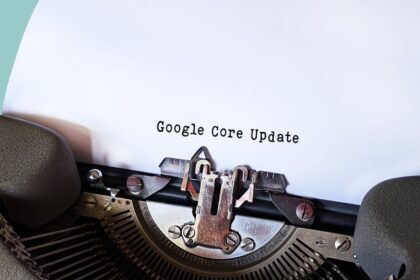Understanding the Foundation: What is Search Intent?
Search intent, also known as user intent or keyword intent, represents the primary goal or motivation behind a user’s search query. It’s not just about the words they type; it’s about why they’re typing those words. Understanding this “why” is paramount to creating content that not only ranks well but also genuinely satisfies the searcher’s needs. Neglecting search intent leads to irrelevant content, poor user experience, and ultimately, a waste of SEO efforts.
Search intent acts as the invisible hand guiding users towards relevant and helpful information. It’s the underlying question they’re trying to answer, the problem they’re trying to solve, or the desire they’re trying to fulfill. Failing to address this intent means failing to connect with your target audience, regardless of how meticulously keyword-optimized your content might be.
The Four Pillars of Search Intent: A Comprehensive Breakdown
Traditionally, search intent is categorized into four primary types: informational, navigational, transactional, and commercial investigation. However, understanding the nuances within each category is crucial for crafting highly targeted content.
-
Informational Intent: This encompasses searches where users are seeking specific information, answers to questions, or general knowledge. The query often starts with “what,” “how,” “why,” “when,” or includes terms like “definition,” “guide,” or “tutorial.”
-
Characteristics: Users in this phase are typically in the early stages of their buying journey (if applicable) or simply expanding their understanding of a topic. They are not yet ready to make a purchase, but they are actively seeking information to inform their decisions. Content targeting informational intent should be educational, comprehensive, and authoritative.
-
Examples:
- “What is blockchain technology?”
- “How to bake a chocolate cake?”
- “Why is the sky blue?”
- “Best time to visit Italy”
- “Definition of artificial intelligence”
-
Content Formats: Blog posts, articles, guides, tutorials, explainer videos, FAQs, and infographics are effective for addressing informational intent.
-
Sub-Categories: Informational intent can be further divided into “Know” (general knowledge), “Know Simple” (quick answers), and “Do” (how-to guides). Understanding these sub-categories allows for even more precise content targeting. For instance, a “Know Simple” query like “population of France” requires a concise, direct answer, while a “Do” query like “how to change a tire” necessitates a step-by-step guide.
-
-
Navigational Intent: Users with navigational intent are trying to reach a specific website or webpage. They already know where they want to go and are using the search engine as a shortcut.
-
Characteristics: These queries often include brand names or specific website terms. The user is not necessarily searching for information about the product or service itself, but rather the official website or a specific page within it.
-
Examples:
- “Facebook login”
- “Amazon customer service”
- “YouTube studio”
- “Netflix pricing”
- “Apple support”
-
Content Formats: While you might not directly create content specifically for navigational intent (unless you own the brand), optimizing your website’s title tags and meta descriptions with brand keywords is crucial. Ensuring your website appears at the top of the search results for branded terms is paramount. Strong site navigation and clear internal linking also contribute to a positive user experience for those with navigational intent.
-
Winning Strategies: Brand reputation management is vital. Addressing negative reviews and ensuring a positive online presence helps solidify your brand’s position for navigational searches. Furthermore, schema markup can enhance your search listings with sitelinks, further assisting users in navigating to specific pages on your website.
-
-
Transactional Intent: This is where users are ready to make a purchase or complete a specific action, such as signing up for a newsletter or downloading a file.
-
Characteristics: Transactional queries typically include keywords like “buy,” “purchase,” “order,” “download,” “sign up,” or “subscribe.” The user is actively looking to complete a transaction or take a specific action.
-
Examples:
- “Buy iPhone 14 Pro”
- “Order pizza online”
- “Download free ebook”
- “Sign up for Netflix”
- “Purchase Adobe Photoshop”
-
Content Formats: Product pages, landing pages, e-commerce category pages, and lead generation forms are ideal for targeting transactional intent.
-
Optimizing for Conversions: Clear calls to action (CTAs), secure payment gateways, detailed product descriptions, high-quality product images, and customer reviews are essential for converting users with transactional intent. Streamlining the checkout process and offering multiple payment options can also significantly improve conversion rates. Price competitiveness and attractive shipping options are also crucial factors.
-
-
Commercial Investigation Intent: This represents the stage where users are researching different options before making a purchase. They’re comparing products, reading reviews, and seeking recommendations.
-
Characteristics: These queries often include terms like “best,” “top,” “review,” “vs,” “comparison,” or “alternative.” The user is not yet ready to buy but is actively gathering information to make an informed decision.
-
Examples:
- “Best laptop for students”
- “Top rated coffee makers”
- “Samsung S23 vs iPhone 14”
- “Review of Dyson vacuum cleaner”
- “Alternatives to Adobe Photoshop”
-
Content Formats: Comparison articles, product reviews, buying guides, case studies, and expert roundups are effective for targeting commercial investigation intent.
-
Building Trust and Authority: Providing unbiased and objective information is crucial for gaining the user’s trust. Highlight both the pros and cons of different products or services and offer clear recommendations based on specific user needs. Including customer testimonials and expert opinions can further enhance credibility.
-
Beyond the Four Pillars: Advanced Search Intent Considerations
While the four pillars provide a solid foundation, a deeper understanding of search intent requires considering additional factors and nuances:
-
Location-Based Intent: Many searches have a local component. Users searching for “restaurants near me” or “plumbers in Chicago” are expressing a clear local intent. Optimizing for local SEO is crucial for businesses that serve a specific geographic area. This includes claiming and optimizing your Google Business Profile, building local citations, and incorporating local keywords into your website content.
-
Time-Sensitive Intent: Some searches are driven by current events or specific time periods. For example, searches for “tax deadlines” or “best Black Friday deals” are highly time-sensitive. Creating content that addresses these needs during the relevant timeframes can significantly boost traffic and conversions.
-
Mobile vs. Desktop Intent: Users on mobile devices often have different search intents than those on desktop computers. Mobile users are often looking for quick answers, directions, or immediate solutions. Desktop users, on the other hand, may be more likely to engage in more in-depth research or complex tasks. Optimizing your website for mobile devices and tailoring content to mobile user needs is essential in today’s mobile-first world.
-
Content Freshness: For certain topics, particularly those related to news, technology, or finance, freshness is paramount. Google prioritizes newer content for these types of queries. Regularly updating your content and providing the latest information is crucial for maintaining relevance and ranking well for these topics.
-
Visual vs. Textual Intent: Some users prefer to consume information visually, while others prefer textual content. Catering to both preferences by incorporating images, videos, infographics, and other visual elements into your content can improve user engagement and satisfaction. Google Lens and image search are increasingly important, so optimizing your images with descriptive alt text is also crucial.
Keyword Research: Unveiling the Intent Behind the Query
Keyword research is not just about finding high-volume keywords; it’s about understanding the intent behind those keywords. Here’s how to use keyword research to uncover search intent:
-
Keyword Analysis Tools: Utilize tools like Google Keyword Planner, Ahrefs, SEMrush, and Moz Keyword Explorer to identify relevant keywords for your target audience. These tools provide insights into search volume, keyword difficulty, and related keywords.
-
SERP Analysis: Analyze the search engine results pages (SERPs) for your target keywords. Pay attention to the types of content that are ranking, the featured snippets, and the questions that are being asked in the “People Also Ask” section. This provides valuable clues about the search intent behind the query.
-
Keyword Grouping: Group keywords based on their underlying intent. For example, keywords like “what is SEO” and “SEO tutorial” would fall under informational intent, while keywords like “SEO services pricing” and “hire an SEO expert” would fall under transactional intent.
-
Long-Tail Keywords: Focus on long-tail keywords, which are longer and more specific search queries. These keywords often indicate a more specific search intent and can be easier to rank for. For example, instead of targeting the broad keyword “running shoes,” target the long-tail keyword “best running shoes for flat feet.”
-
Question Keywords: Identify question keywords, which are queries that start with “what,” “how,” “why,” “when,” or “where.” These keywords are indicative of informational intent and can be used to create FAQs, blog posts, and other educational content.
Crafting Content That Aligns with Search Intent: A Practical Guide
Once you’ve identified the search intent behind your target keywords, it’s time to create content that aligns with that intent. Here’s a step-by-step guide:
-
Choose the Right Content Format: Select the content format that best suits the search intent. For informational intent, blog posts, articles, and guides are often the best choice. For transactional intent, product pages and landing pages are more appropriate. For commercial investigation intent, comparison articles and product reviews are ideal.
-
Address the User’s Question or Problem Directly: Don’t beat around the bush. Get straight to the point and answer the user’s question or solve their problem as quickly and efficiently as possible.
-
Provide Comprehensive and Authoritative Information: Ensure your content is accurate, up-to-date, and comprehensive. Back up your claims with data, research, and expert opinions.
-
Optimize for Readability: Make your content easy to read and understand. Use clear headings, subheadings, bullet points, and images to break up the text and improve readability.
-
Include a Clear Call to Action (CTA): For transactional intent, include a clear and compelling CTA that encourages the user to take the desired action, such as making a purchase or signing up for a newsletter.
-
Optimize for Mobile: Ensure your content is mobile-friendly and provides a seamless user experience on all devices.
-
Use Schema Markup: Implement schema markup to provide search engines with more information about your content. This can help improve your search rankings and increase click-through rates.
-
Internal Linking: Use internal links to connect related content on your website. This helps users navigate your website and discover more relevant information. It also helps search engines understand the structure and hierarchy of your website.
-
External Linking: Link to reputable external sources to support your claims and provide additional information for your readers. This can help build trust and authority.
-
Monitor and Analyze: Track the performance of your content using tools like Google Analytics and Google Search Console. Monitor key metrics such as traffic, bounce rate, time on page, and conversion rates. Use this data to identify areas for improvement and optimize your content for better results.
On-Page SEO Tactics Tailored to Search Intent
Effective on-page SEO goes beyond simply stuffing keywords into your content. It involves strategically optimizing various elements of your webpage to signal search engines and users about the relevance and value of your content. Here’s how to tailor your on-page SEO to specific search intents:
-
Title Tags: Craft compelling and descriptive title tags that accurately reflect the content of the page and include relevant keywords. For informational intent, use question-based keywords in your title tags. For transactional intent, use keywords like “buy,” “purchase,” or “order.”
-
Meta Descriptions: Write enticing meta descriptions that summarize the content of the page and encourage users to click through from the search results. Highlight the benefits of clicking on your link and address the user’s specific needs.
-
Header Tags (H1-H6): Use header tags to structure your content and create a clear hierarchy of information. Use your primary keyword in the H1 tag and use related keywords in the H2-H6 tags.
-
Image Alt Text: Optimize your images with descriptive alt text that includes relevant keywords. This helps search engines understand what your images are about and improves accessibility for visually impaired users.
-
URL Structure: Create clean and descriptive URLs that include relevant keywords. Avoid using long and complicated URLs with unnecessary characters.
-
Keyword Placement: Strategically place your target keywords throughout your content, including in the title, meta description, header tags, body text, and image alt text. However, avoid keyword stuffing, which can harm your search rankings.
-
Content Length: The ideal content length depends on the search intent. For informational intent, longer, more comprehensive content is often preferred. For transactional intent, shorter, more concise content that focuses on the product or service being offered is more appropriate.
-
User Experience (UX): Ensure your website is user-friendly and provides a positive user experience. This includes having a fast loading speed, a responsive design, and easy navigation.
Examples of Search Intent Optimization in Action
Let’s look at some real-world examples of how to optimize content for specific search intents:
-
Search Query: “Best Coffee Maker Under $100”
- Search Intent: Commercial Investigation
- Content Format: Comparison Article
- On-Page Optimization:
- Title Tag: “Best Coffee Makers Under $100: Top Picks & Reviews”
- Meta Description: “Looking for the best coffee maker under $100? We’ve tested and reviewed the top models to help you find the perfect one for your needs.”
- Header Tags: H1: Best Coffee Makers Under $100, H2: Top 3 Coffee Makers, H2: Comparison Table, H2: Buyer’s Guide
- Content: A detailed comparison of different coffee makers under $100, including their features, pros and cons, and customer reviews.
-
Search Query: “How to Change a Flat Tire”
- Search Intent: Informational (Do)
- Content Format: Step-by-Step Guide
- On-Page Optimization:
- Title Tag: “How to Change a Flat Tire: A Step-by-Step Guide”
- Meta Description: “Learn how to safely and effectively change a flat tire with our comprehensive step-by-step guide. Includes helpful tips and illustrations.”
- Header Tags: H1: How to Change a Flat Tire, H2: Gather Your Supplies, H2: Loosen the Lug Nuts, H2: Jack Up the Car, H2: Remove the Flat Tire, H2: Install the Spare Tire
- Content: A detailed step-by-step guide with clear instructions and illustrations, explaining how to change a flat tire safely and effectively.
-
Search Query: “Buy Running Shoes Online”
- Search Intent: Transactional
- Content Format: E-Commerce Category Page
- On-Page Optimization:
- Title Tag: “Buy Running Shoes Online – Shop Top Brands | [Your Website Name]”
- Meta Description: “Shop a wide selection of running shoes online from top brands. Find the perfect pair for your running style and budget.”
- Header Tags: H1: Running Shoes, H2: Shop by Brand, H2: Shop by Feature
- Content: A well-organized category page with high-quality product images, detailed product descriptions, customer reviews, and clear calls to action.
Tools and Resources for Search Intent Analysis
Numerous tools and resources can assist in understanding and optimizing for search intent:
-
Google Search Console: Provides insights into the keywords users are searching for to find your website and the pages they are landing on. This data helps identify opportunities to optimize existing content or create new content that better aligns with user intent.
-
Google Analytics: Tracks user behavior on your website, including bounce rate, time on page, and conversion rates. This data can help you assess the effectiveness of your content in satisfying user intent.
-
Ahrefs and SEMrush: These comprehensive SEO tools offer keyword research capabilities, SERP analysis, and competitor analysis, enabling you to uncover the search intent behind various keywords and identify opportunities to improve your content strategy.
-
AnswerThePublic: A visual keyword research tool that generates a wealth of questions, prepositions, comparisons, and related keywords based on a single seed keyword. This tool is particularly useful for identifying informational intent.
-
Surfer SEO and Clearscope: Content optimization tools that analyze top-ranking content for your target keywords and provide recommendations for improving your content’s relevance and comprehensiveness. These tools help ensure your content aligns with user expectations.
-
User Testing Platforms (e.g., UserTesting.com): Allow you to observe real users interacting with your website and content. This provides valuable qualitative data about user behavior and can help you identify areas where your content is failing to meet user needs.
Staying Ahead of the Curve: Adapting to Evolving Search Intent
Search intent is not static; it evolves over time as user behavior, technology, and search engine algorithms change. Staying ahead of the curve requires continuous monitoring, analysis, and adaptation.
-
Monitor Search Trends: Keep an eye on emerging search trends and adapt your content strategy accordingly. Google Trends is a valuable tool for tracking search interest over time.
-
Analyze SERP Features: Pay attention to the different SERP features that Google is displaying for your target keywords, such as featured snippets, knowledge panels, and image carousels. These features provide valuable clues about the type of content that Google considers to be most relevant for a particular query.
-
Stay Up-to-Date on Algorithm Updates: Google’s search algorithm is constantly evolving, and algorithm updates can significantly impact search rankings. Stay informed about the latest algorithm updates and adjust your SEO strategy accordingly.
-
Embrace AI and Machine Learning: AI and machine learning are playing an increasingly important role in search intent understanding. Google is using these technologies to better understand the meaning behind search queries and to deliver more relevant results. Embrace AI-powered tools and technologies to improve your content creation and optimization efforts.
-
Focus on User Experience: Ultimately, the best way to satisfy search intent is to provide a positive user experience. Create content that is informative, engaging, and easy to use. Focus on meeting the needs of your target audience and providing them with the information they are looking for.
By consistently monitoring search trends, adapting to algorithm updates, and prioritizing user experience, you can ensure that your content remains relevant and effective in satisfying search intent. The path to a smarter on-page strategy lies in continually refining your understanding and application of these principles.










